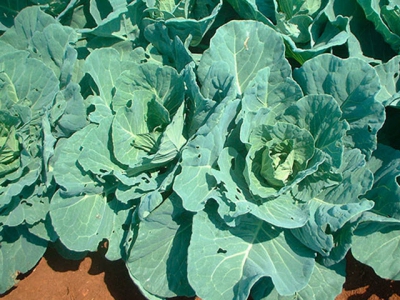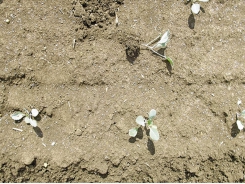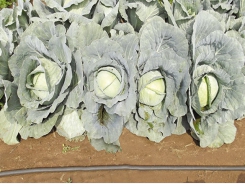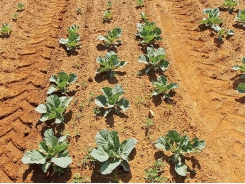Defeating the cabbage moth biologically

Nearly everyone who has ever grown brassicas has had a problem with the diamondback moth (Plutella xylostella). Small wonder it is also called the ‘cabbage moth’.
The holes in the leaves caused by diamondback moth larvae are clearly visible. Photo: Bill Kerr
An infestation of diamondback moths usually starts at the edge of the land because the moths lay eggs as soon as they encounter a host crop. From there, they gradually spread throughout the land. The moths, which are night-flying, are small, narrow and light grey in colour with a darker diamond pattern on the back. They lay about 250 eggs over a two-week period and the life cycle can be as short as a month when the weather is warm. If it is not controlled, the pest can increase its population quickly and cause considerable damage.
Numbers dwindle in winter in cold areas and during rainy periods. After winter, though, you can easily get caught out if you don’t scout your land regularly. Young cabbages are particularly vulnerable, as eggs are laid on the developing leaves in the centre of the plant. The larvae eats part of the leaf and this damage becomes very obvious once the leaf is fully grown.
Some farmers mistake the damage for a lack of boron. But a boron deficiency causes a jagged tear rather than the rounded holes made by the diamondback larvae. In addition, the larvae will attack only random plants, whereas a boron deficiency will affect all the plants in the area. The larvae also feed under the cover leaves on the head, causing the crop to be downgraded.
They do far less damage to larger, older leaves. Here, they feed on the underside of the leaf, leaving the transparent upper skin intact and creating little ‘windows’ in the process.
Resistance
Several insecticides provide effective control, but the rapid life-cycle offers ample opportunity for this pest to develop resistance to a group of similar insecticides if any of these is used for a long time without alternating it with other products. It’s best to consult a pest control representative. He can tell you which products are effective in your area and which to alternate with.
Use wasp-safe biological products wherever possible.These do not harm the parasitic wasps that provide effective control. In the past 15 years I have had to spray only twice for diamondback moth, on both occasions after a severe winter. By using suitable products, I spared the wasps, which then built up their numbers and controlled the pest.
Integrated approach
The diamondback moth attacks all brassica crops, including several species of brassica weeds. You might be advised by your pest control representative to kill these weeds as they are a potential stopping-off point for the moths to breed en route to infesting the lands. I do not agree with this, because these weeds can maintain a population of wasps that will then move onto the land.
Be patient and persist with biological products; the wasps will appear in due course. Watch for their pure white cocoons on the leaves (diamondback cocoons are translucent). You might also spot the wasps; they are about 5mm long and fly in a zigzag pattern as they scan the leaves for moth larvae in which to lay their eggs.
If there are only a few wasps and many caterpillars, apply a safe product such as DiPel once or twice; this will reduce the larvae population and give the wasps time to build up their numbers. The wasps also help by seeking out caterpillars in areas inaccessible to spraying. This integrated approach usually works well and saves effort and expense. It does, however, require frequent inspection of your land.
Related news
Tools

Phối trộn thức ăn chăn nuôi

Pha dung dịch thủy canh

Định mức cho tôm ăn

Phối trộn phân bón NPK

Xác định tỷ lệ tôm sống

Chuyển đổi đơn vị phân bón

Xác định công suất sục khí

Chuyển đổi đơn vị tôm

Tính diện tích nhà kính

Tính thể tích ao




 Dealing with aphids on brassicas
Dealing with aphids on brassicas  Kill the weed, not the cabbage
Kill the weed, not the cabbage